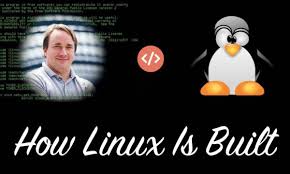HOW LINUX IS BUILT
you use Linux every day whether you know it or not over 850,000 Android phones running Linux are activated every single day compare that to just 30,000 windows phones according to the latest reports that means 100 Android devices have come online just since you started watching this post nearly 700,000 TVs are sold every day most of which are running Linux 8 out of 10 financial trades are powered by lennox 9 out of 10 of the world's supercomputers run Linux Google Twitter Facebook and Amazon are all powered by Linux so how is Linux developed to achieve all of this unlike other operating systems like Windows or iOS Linux is built collaboratively across companies geographies and markets resulting in the largest collaborative development project in the history of computing just since 2005 about 8,000 developers from almost 800 companies have contributed to the Linux kernel these contributions have resulted in 15 million lines of code 1.5 million lines written in just the last couple of years consider that Homer's epic Iliad poem is a mere 15 thousand lines of text the novel war and peace just five hundred sixty thousand words but it's not just about the sheer number of lines of code it's also about how quickly Linux is developed and released for example a major new kernel comes out every two to three months compare this two years for competing operating systems this is made possible by a unique collaborative development process when submitting code to the Linux kernel developers break changes into individual units called patches a patch describes the lines that need to be changed added or removed from the source code each patch can add a new feature new support for a device fix a problem improve formitz or rework things to be more easily understood developers post their patches to the relevant mailing lists where other developers can reply with feedback when the patch is close to being release ready it is accepted by a senior Linux kernel developer or maintainer who manages one or more of 100 different sections of the kernel well this isn't a guarantee that it will go to the main line it's certainly a good sign here it gets an even more extensive evaluation when the maintainer finishes their review he or she will sign off on the patch and send it on to Linux creator and Linux foundation fellow leanest Torvalds who has the ultimate authority on what is accepted into the next release and what is not nearly 10,000 patches go into almost every new release about 6 patches are applied to the kernel each hour Linux is rate of development is simply unmatched today Linux is dominating on mobile devices in the enterprise and web infrastructure data centers supercomputing and more what's next because together we're ready you

Post a Comment